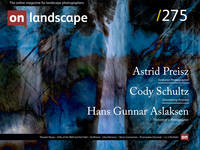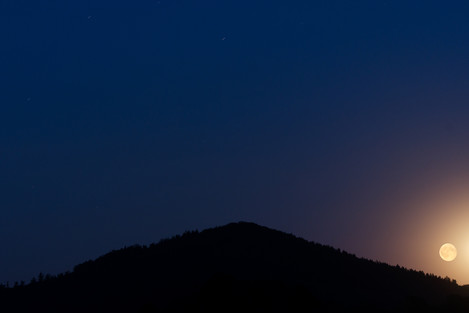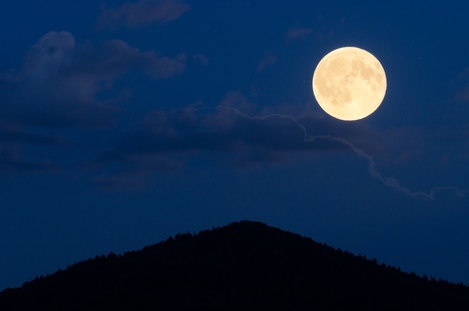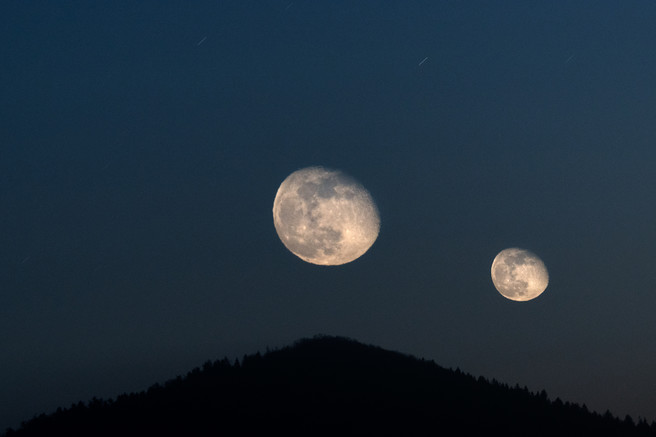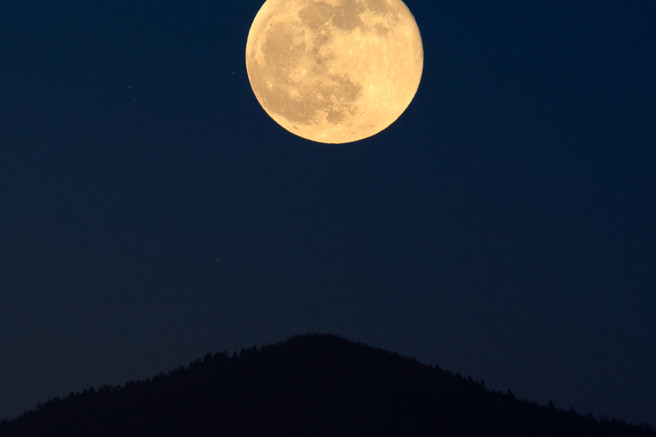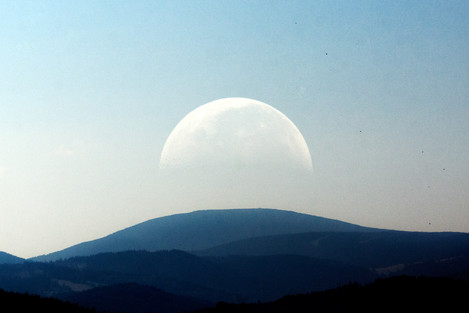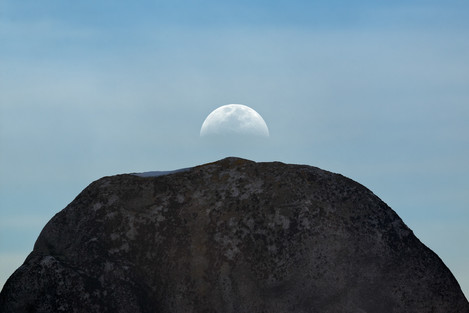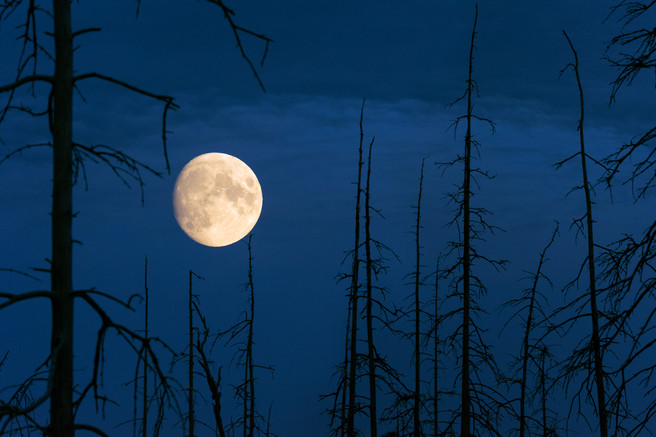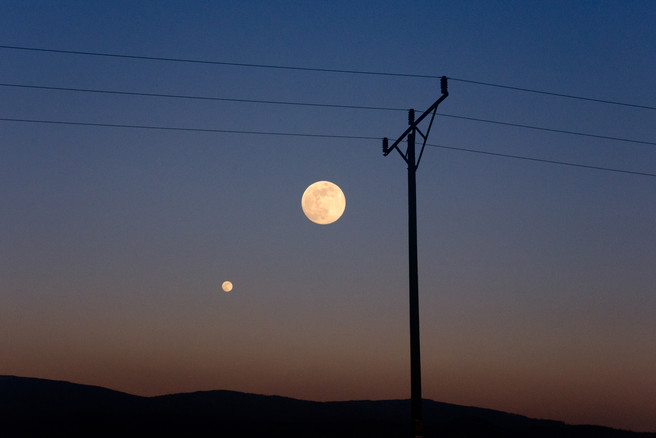Our closest celestial body

Przemyslaw Ziemacki
Przemyslaw Ziemacki is a nature photographer and journalist from Klodzko, Poland. He takes landscape as well as wildlife and details photographs. He works mainly in his home area but also has traveled around Europe, especially to take photographs around the Baltic Sea. Three of his photography projects – “Night”, “Seagulls at twilight” and “Quanta of rose and snow” – incorporate artificial light in nature photography.
Full Moon
Landscape and our closest celestial body – photography paths leading through cultural meaning and Cartesian geometry.
There was a moon, and there was a mountain. The mountain had close relations with the Moon. Particularly with the Full Moon that visited her regularly and hung over her top for a while. When the Moon was supposed to appear, the sky got beautiful navy blue. The Moon was always on time, and the mountain was always on place. The Moon was not only bright but also preceded and followed by light. She was dark. Once just dark, once true solid black. They both were no-hurry types. Even when things went pretty fast from one point of view, they slowed down from the other. When rising, the Moon seemed to climb over her hillside like a point going along a chart of a math function. The mountain symbolised the Earth’s landscape. The landscape is reduced to a single form. The Moon symbolised a comer. One thing is constant, and the other one – is constantly on the way. One shape that dominates locally, and the second one - is in the Universe. Both are nearly perfect. A strong connection without a touch. When together, they became a story. When alone, each of them was a promise of the story. As far as their relations lasted...
This is how I saw the Moon in my home landscape between 2016 and 2019. The mountain is called Ptasznik (the word is difficult to translate, but it comes from the Polish word “ptak” which means a bird; Germans used to call her Vogelberg, which means a bird mountain).
The photo titled “Simple landscape with the Moon” is an antipostcard for me. A typical landscape postcard is composed according to the rule of thirds and presents pretty colourful landscape, including many eye-attractive objects. Often the thing aligned with one of the strong points is the Sun at sunset. Postcards are like dishes in a restaurant where everything – steak, chips and salad – looks tasty and has its place on a plate and stimulates joyful feelings. My photo is also composed in such a manner, but everything else is in opposition: the colours are only a few, the landscape is reduced to a single simple shape, and there is the Moon instead of the Sun. I do not think it is sad etc., but it is not joyful as well. The other photos in the project are kept in this convention however, major surreal effects appear. This series is put in order like most novels with an introduction (“Meanwhile”), action set up (“Moonrise”), a culminating phase (“Ptasznik and the Moon”, “Simple landscape with the Moon”, “Moon way”) and the end (the photos have not been titled yet). It is my only series in which chronology plays a crucial role.
Semicirlcles
My second lunar project is named “Semicircles” and it could be described as an evolution of “Full Moon” however, it has appeared in my mind partly because of nature protection matters. The highest mountain I can see from my town is “Śnieżnik” (the word is also difficult to translate, it comes from the Polish word “śnieg” which means snow; Germans used to call her Schneeberg, which means a snowy mountain). There are no trees on the top of her which is hundred percent natural thing (1425 meters above sea level and severe microclimate). Śnieżnik has a beautiful look, especially in early spring when the forest under the top is seen from a distance as blue or black, and there is still snow on the highest part. No wonder this mountain became a heart of a landscape park. But it does not mean she is well protected.
A few years ago, the local authorities decided to destroy this natural landscape by building a view tower (unfortunately, it has been done yet). When I heard that horrible news, I wanted to celebrate the Śnieżnik’s natural shape in some special way. I was wondering what was the key feature of her, and the answer was a semicircle-like shape, emphasised by the bald top. That is how I decided to put the mountain and the Moon in a first quarter one below the other.
The Moon, though often visible in the daytime, is strongly connected with night, so also spiritual and mystic things. I do not feel that mysticism dominates my photography, but it is present there for sure. One of the common lunar concepts from mysterious tales is an old forest to be crossed by a main character on a moonlit night (generally, doing something at moonlit is usually a magical experience). I have a standing alone photo which uses this motive. It is titled “Scary forest”, and it was taken on a peat bog – one of the most important nature preserves in my neighbourhood - where withered trees are a part of nature landscape. Literally, except for the sky, there are only the relict trees and the Moon so this frame is hundred percent magic.
As an epilogue, I have a photo which I have taken being inspired by David Lynch’s films, “Twin Peaks” – probably my favourite series - especially. This photo is titled “A postcard for Lynch”. His films - or even the first season of “Twin Peaks” alone - have so rich symbolism that may be the best option is not to write here about it. Just want you to know I miss no owl wanted to sit in front of my camera. So there is space for a better postcard...
Full Moon
- Full Moon
- Full Moon Rise
- Ptasznik and the Moon
- Simple Landscape With The Moon
- Full Moon Moon Way
- Full Moon, No Title
- Full Moon, No Title
Semicircles
- Hill
- Done
- Stone
- Standing alone, scary forest
- Standing alone, postcard for Lynch

